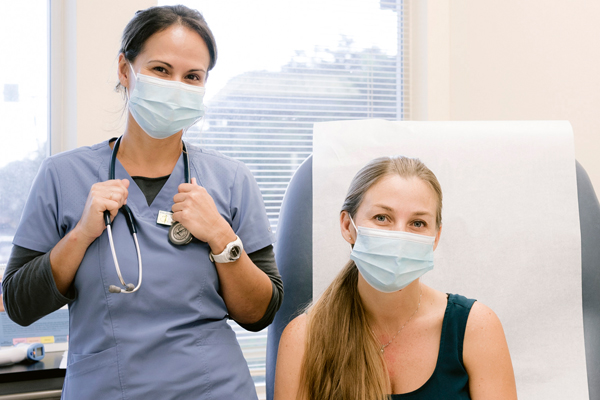Keeping Connections with Health Care Providers Strong

The West Hawai‘i Community Health Center (WHCHC) serves the entire west side of Hawai‘i Island—that’s 17,000 patients in an 80-mile corridor. Patients rely on the health center for medical, dental, and behavioral health care. In March 2020, the walk-in center had to adjust to social distancing guidelines and everything needed to go virtual. “The patients we see have statistically higher rates of chronic unmet health care needs, so it’s extremely important they stay connected to their primary care provider,” says Natasha Ala, director of marketing, development, and grants.
In two months, WHCHC shifted from a walk-in center to a telehealth hub. Patients were able to access health care services remotely through their mobile device or computer. “We hadn’t moved in the direction of telehealth strategically, but the pandemic gave us the opportunity to venture into that space out of necessity,” says Hanes.
“We had to build the plane while flying in the air,” says Dr. Victoria Hanes, chief operating officer, who notes that the center’s computers weren’t equipped with cameras pre-pandemic. WHCHC staff used telehealth platform trial runs to hold their first sessions with patients to help familiarize both sides with the new form of service.
Throughout the pandemic, HCF has prioritized delivery of pandemic-related services, such as testing, public education, and vaccines. Federally qualified community health centers (FQHC) like WHCHC, ramped up to meet the growing needs of their communities, which are typically rural and underserved areas. At the end of 2020, in partnership with The Freeman Foundation, HCF deployed $1.3 million in grant awards to 14 FQHCs statewide to help strengthen their telehealth services.
Dr. Hanes, who is a psychologist at WHCHC, says telehealth has saved lives. One of her behavioral health patients was laid off from her hospitality job and was on the verge of losing housing, which was negatively impacting her mental health. Thanks to the accessibility of telehealth, Dr. Hanes was able to ‘see’ her patient weekly rather than monthly when she visited in person and to give her the necessary additional support she needed.
“Telehealth was a lifeline for her,” says Dr. Hanes. “Eventually unemployment kicked in and she made it to the other side. She’s doing well now and is back at work.”
Read more Stories of Impact